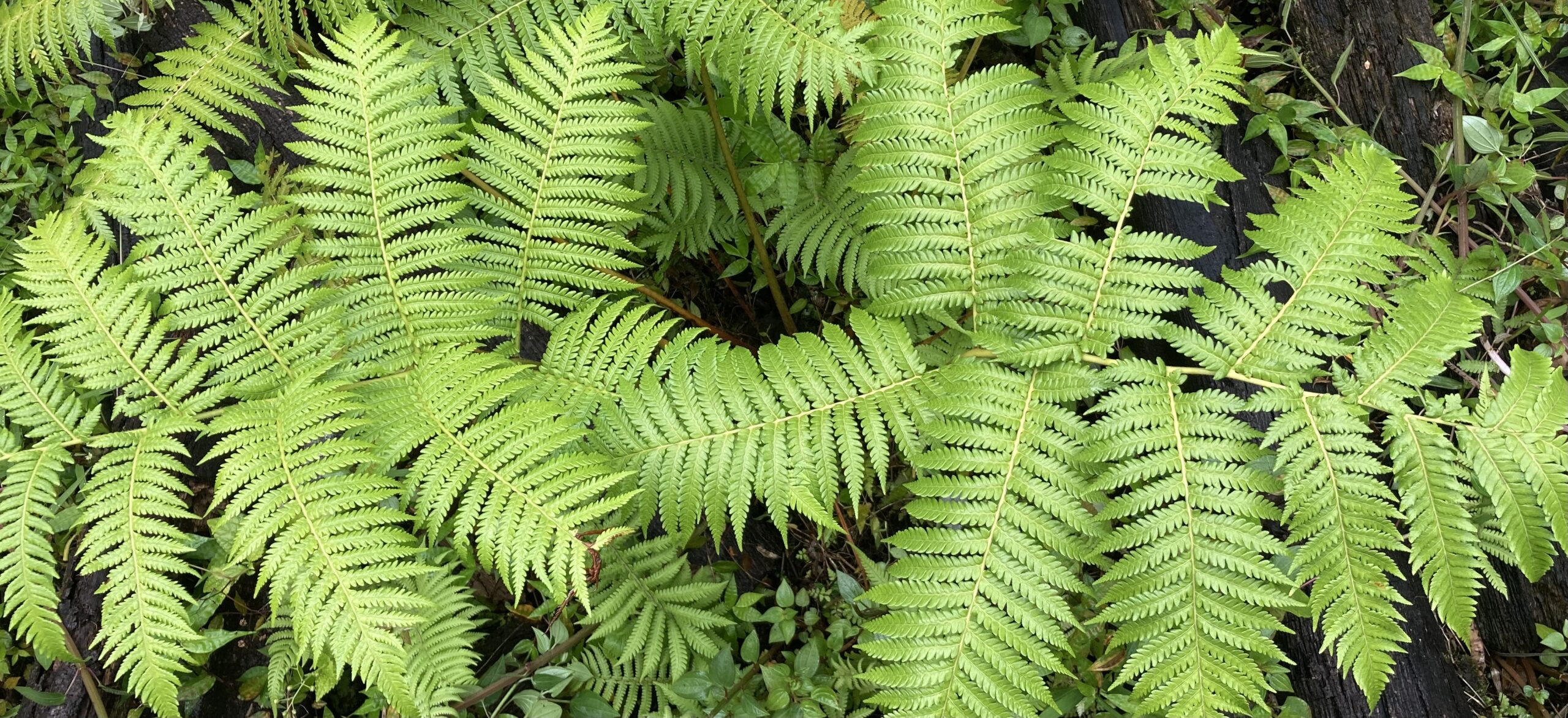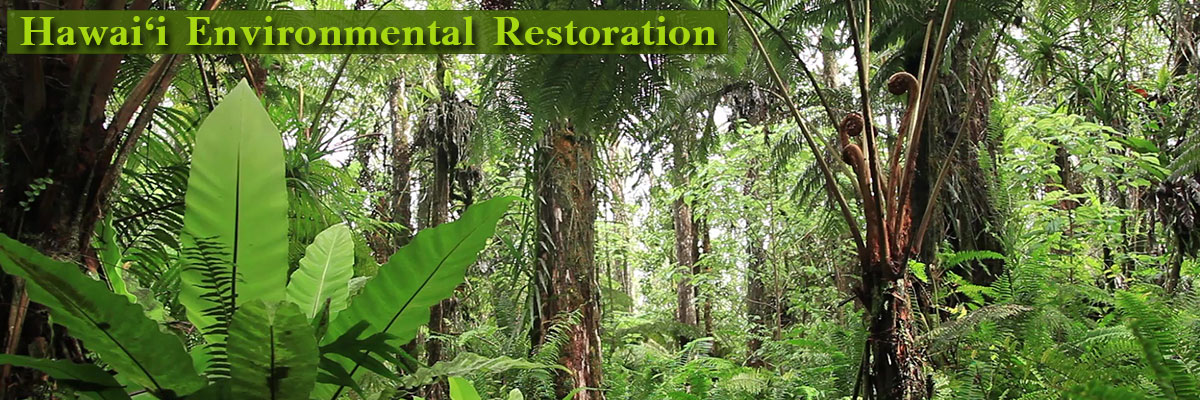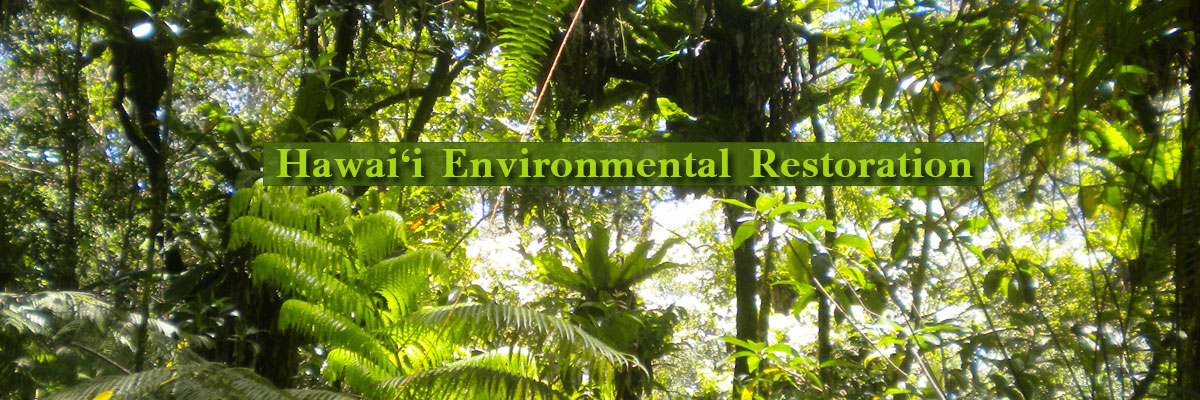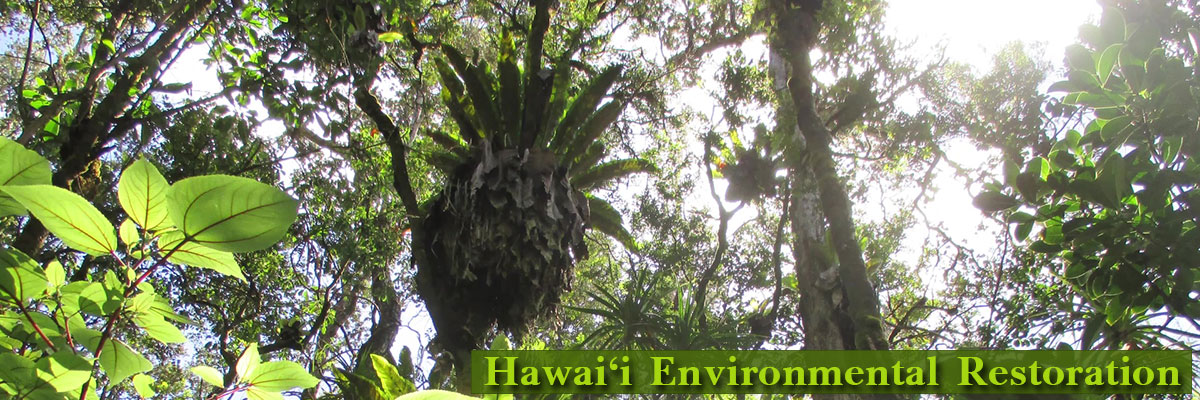Hawaii Environmental Restoration is excited to take this long-established Puna native forest restoration program under its wings for 2024 and beyond. We hope you enjoy the below history of this program, previously administered through Malama O Puna.

Since the late 1990s, Ann Kobsa has been active in preserving and restoring native diversity in the Halepua`a section of the Nanawale  State Forest Reserve, through miconia eradication efforts, identification of significant plant assemblages, and outplantings. Despite significant challenges from threats such as feral pig, Little Fire Ant, and Rapid Ohia Death, the forest has continued to evolve as a contiguous canopied ecosystem featuring native, canoe, and exotic species. Looking from above, one sees large swaths of dense hala punctuated with majestic surviving ‘ohi`a and broad, mature mangoes. In other areas, opportunistic species such as cecropia, melochia, gunpowder, and waiwe guava combine to maintain a canopy and minimize invasive grasses and vines. Entering from below, the transition from harsh, glaring tropical sun to cool, wet, shady green feels like a comforting embrace. Together, these assemblages produce a stabilizing effect on the local environment, keeping the young, fragile topsoil moist, sequestering significant carbon, and generating and attracting the frequent precipitation that is a must for the area’s horticulturists and water catchment-reliant communities.
State Forest Reserve, through miconia eradication efforts, identification of significant plant assemblages, and outplantings. Despite significant challenges from threats such as feral pig, Little Fire Ant, and Rapid Ohia Death, the forest has continued to evolve as a contiguous canopied ecosystem featuring native, canoe, and exotic species. Looking from above, one sees large swaths of dense hala punctuated with majestic surviving ‘ohi`a and broad, mature mangoes. In other areas, opportunistic species such as cecropia, melochia, gunpowder, and waiwe guava combine to maintain a canopy and minimize invasive grasses and vines. Entering from below, the transition from harsh, glaring tropical sun to cool, wet, shady green feels like a comforting embrace. Together, these assemblages produce a stabilizing effect on the local environment, keeping the young, fragile topsoil moist, sequestering significant carbon, and generating and attracting the frequent precipitation that is a must for the area’s horticulturists and water catchment-reliant communities.

In 2017, Malama O Puna began administering a series of micro-grants to consolidate and expand these early volunteer efforts. The result is a Restoration Corridor where over five hundred specimens of a mixture of fourteen native species are planted and maintained. Some of the largest `ohe, hapu`u, and akia plantings are twenty years old. And new volunteer `ohi`a keiki are being brought up, a next generation hopefully more resistant to disease. Through maintenance of a border trail that minimizes tree-to-tree contact, regular testing, and spraying of a chemical barrier treatment, Diga Kern keeps the forest free of little fire ants along one mile of vulnerable boundary next to residences and farms.
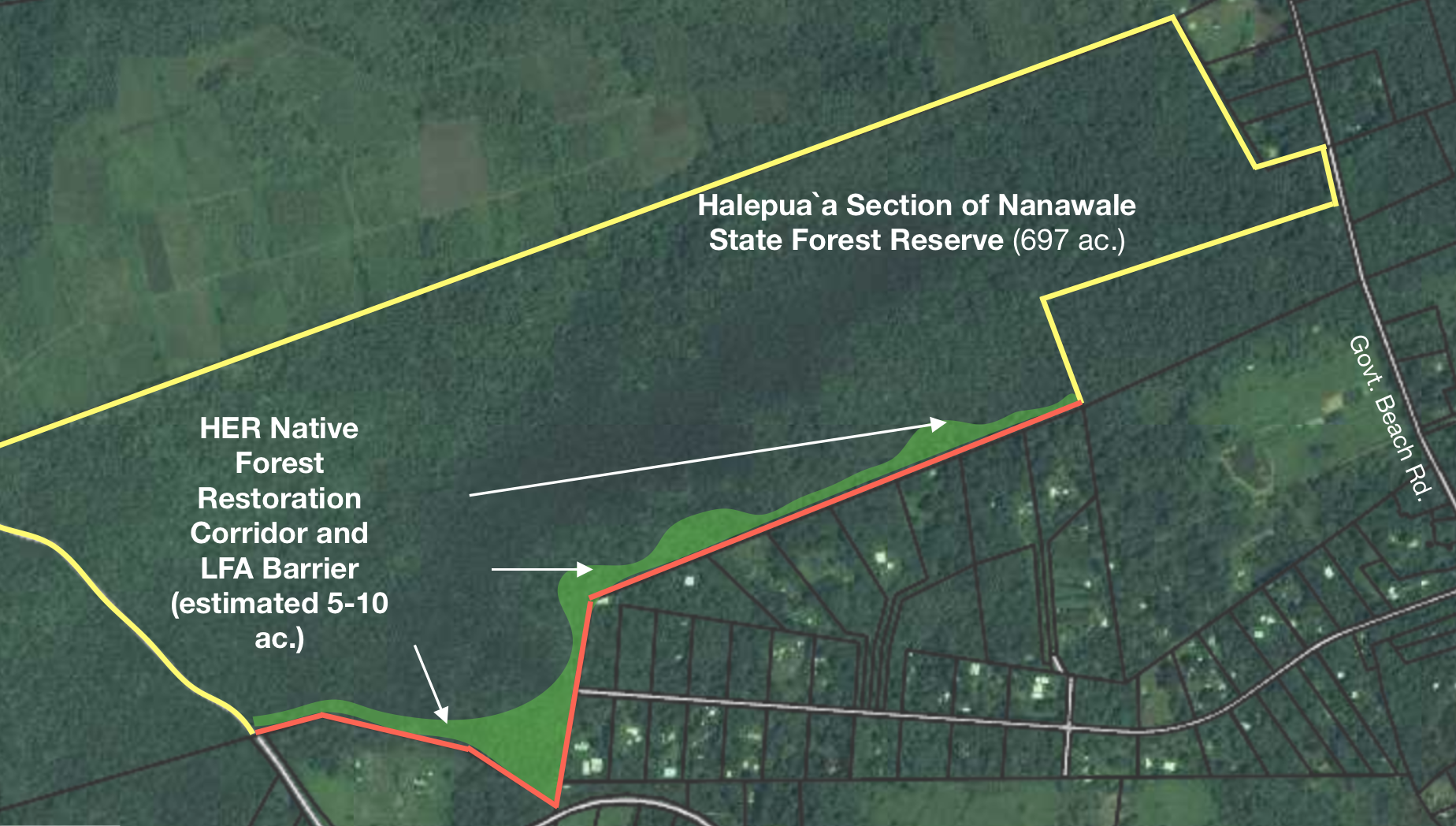
Malama O Puna’s native restoration work in Halepua`a mauka is a perfect complement to the cultural landscape of its makai portion, where the remnants of Polynesian canoe plantings indicate the thriving Hawaiian villages of less than 150 years ago. The Nanawale State Forest Reserve is linked via the County-protected old growth mango Government Beach Road with two other forests of interest, Wai`ele and Kahuwai. At Kahuwai, Kamehameha Schools/Bishop Estates has conducted archaeological and educational programs for decades. With the 2021 County acquisition of Wai`ele through its public lands fund, Hawaiian descendants and community stakeholders are crafting similar preservation efforts just to the south. Altogether, these lands represent over 2000 acres of rainforest and one mile of coastline protected from development. In accordance with the Rights of Nature movement worldwide, we celebrate this ecosystem as a cohesive, interconnected entity, with intrinsic value apart from any of its uses for humans. That the forest of coastal Pu`u`a does benefit humans in multifold, interlinking ways only highlights the essentialness of its defense and protection.
